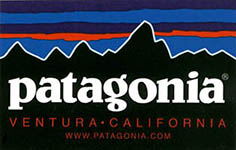
FAQ Alaska Winter Tour Gear: Aurora Viewing | Dog Mushing | Iditarod Tours
What should I wear when viewing the Northern Lights, while dog sledding or during Iditarod Tour ?
When preparing for outdoor activities in Alaska like Northern Lights viewing, it's essential to dress warmly. Layering is key to stay comfortable in cold temperatures. Start with thermal base layers, add insulating mid-layers, and finish with a waterproof and insulated outer layer. Don't forget to wear a good quality winter hat, gloves, and a scarf to keep your extremities warm.
Base Layer: Moisture Management
This is your next-to-skin layer. More than any other layer, the base layer helps regulate your body temperature by moving perspiration away from your skin. Trapped inside your clothing, perspiration can leave you chilled or damp no matter how well your shell layer fends off rain and snow. Keeping dry is important for maintaining a cool body temperature in the summer and avoiding hypothermia in the winter. If you've ever worn a cotton T-shirt under your raincoat while you hiked, you probably remember feeling wet and clammy, even though you weren't getting wet from the rain itself. Cotton is an example of a fabric that retains perspiration and can leave you vulnerable to unwanted chills.
For outdoor comfort, your base layer should be made of merino wool (popularized by brands such as SmartWool, Ibex and Icebreaker), synthetic fabrics (such as REI MTS, Capilene, PowerDry and CoolMax polyester) or, for a few uses, silk. Rather than absorbing moisture, these fabrics transport (or "wick") perspiration away from your skin, dispersing it on the outer surface where it can evaporate. The result: You stay drier even when you sweat, and your shirt dries faster afterwards. Examples: A base layer can be anything from briefs and sports bras to long underwear sets (tops and bottoms) to tights and T-shirts. It can be designed to fit snugly or a loose fitting, fine-mesh garment. For cool conditions, thermal underwear is available in light-, mid- and expedition-weights. Choose the weight that best matches your activity and the temperature.
Middle Layer: Insulation
The insulating layer helps you retain heat by trapping air close to your body. Polyester fleece vests, jackets and tights are classic examples of insulation ideal for outdoor activities. They not only trap air but are also made with moisture-wicking fibers to help keep you dry. Natural fibers such as wool and goose down are excellent insulators. Wool sweaters and shirts (especially the new generation of merino wool products) offer soft, reliable warmth and keep on insulating even when wet. For very cold and dry conditions, goose down is an excellent choice. It offers an unbeatable warmth-to-weight ratio and is highly compressible. Down's main drawback is that it must be kept dry to maintain its insulating ability. Classic fleece such as Polartec 100, 200 or Thermal Pro polyester and other synthetic insulations such as Thinsulate provide warmth for a variety of conditions. These are popular insulators because they're lightweight, breathable and insulate even when wet. They also dry faster and have a higher warmth-to-weight ratio than even wool. Classic fleece's main drawbacks are wind permeability and bulk (it's less compressible than other fabrics).
Like thermal underwear, fleece garments are available in 3 weights for different uses:
- Lightweight for aerobic activity or mild climates.
- Midweight for moderate activity or climates.
- Expedition-weight for low activity or cold climates.
Examples: For high-energy activities such as cross-country skiing, biking or running, choose lighter-weight fleece to avoid overheating. Tights or tops made of Polartec 100 or Polartec PowerDry are excellent for this. For very cold conditions, try thicker fleece such as Polartec 200 or 300. Wind fleece such as Polartec WindPro polyester or Gore WindStopper adds a high level of wind resistance to fleece. It accomplishes this via a hidden membrane that does not affect breathability or the other things we love most about fleece.
Shell Layer: Weather Protection
The shell or outer layer protects you from wind, rain or snow. Shells range from pricey mountaineering jackets to simple windproof jackets, but most are designed to block precipitation and hold in your body heat while allowing water vapor to escape. Most are treated with a durable water repellent (DWR) finish to make water bead up and roll off. An outer shell is an important piece in bad weather, because if wind and water are allowed to penetrate to your inner layers, you begin to cool off. Furthermore, without proper ventilation, perspiration can't evaporate but instead condenses on the inside of your shell. Fit is another consideration. Your shell layer should be roomy enough to fit easily over other layers and not restrict your movement.
Shell Category Availability
Waterproof/breathable shells: These are usually the most functional (and more expensive) choices. They'll keep you comfortable in any weather, and are especially suited to wet, cold climates and alpine activities. Waterproof fabrics (typically a laminated membrane or a fabric coating) include Gore-Tex, eVent, REI Elements and a wide variety of other branded choices. These shells are categorized by REI as eitherrainwear, which emphasizes low weight and packability, ormountaineering wear, which is more abrasion-resistant and has additional features.
Water-resistant/breathable shells: These are best for mild weather, light precipitation and high activity levels. Less expensive than waterproof/breathable shells, they're usually made of tightly woven fabrics (such as mini-ripstop nylon) that block wind and light rain.
Soft shells: Many offer good wind and rain resistance, but soft shells emphasize breathability. They usually offer both shell and insulative properties, so they in effect combine 2 layers into 1. Most feature stretch fabric or fabric panels for added comfort during aerobic activities. As this category has grown in popularity, styles have become specialized by season, so you'll now find cold- and mild-weather options.
Waterproof/non-breathable shells: These economical shells are typically made of a durable, polyurethane-coated nylon which is water- and windproof. They are ideal for rainy days with light activity (e.g., fishing, sports viewing).
Insulated shells: Some outer shells have a layer of insulation built in, making them convenient for cold, wet conditions, but not as versatile for layering in a variety of temperatures.
© REI
Go Alaska Tours Recommends:



Alaska Travel Guide
Website Statistic
- Users 4
- Articles 268
- Articles View Hits 502795